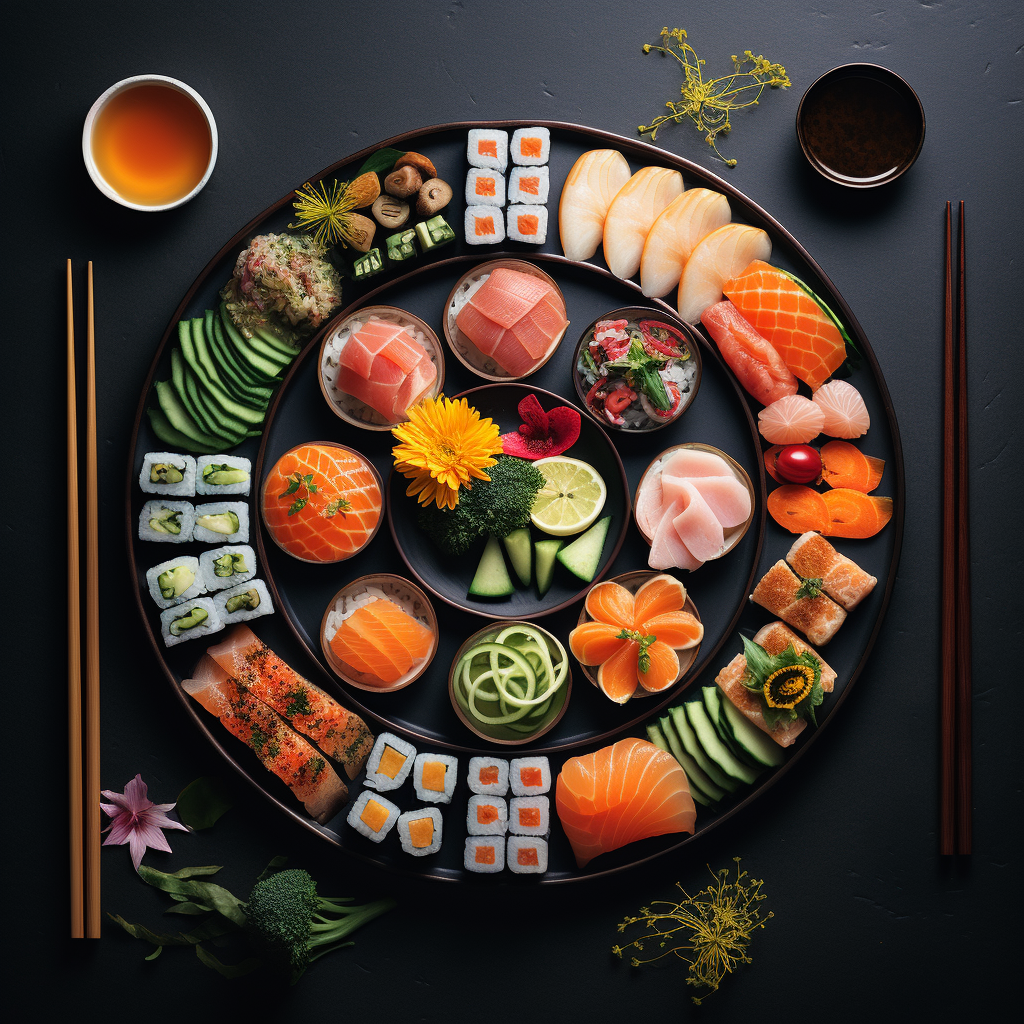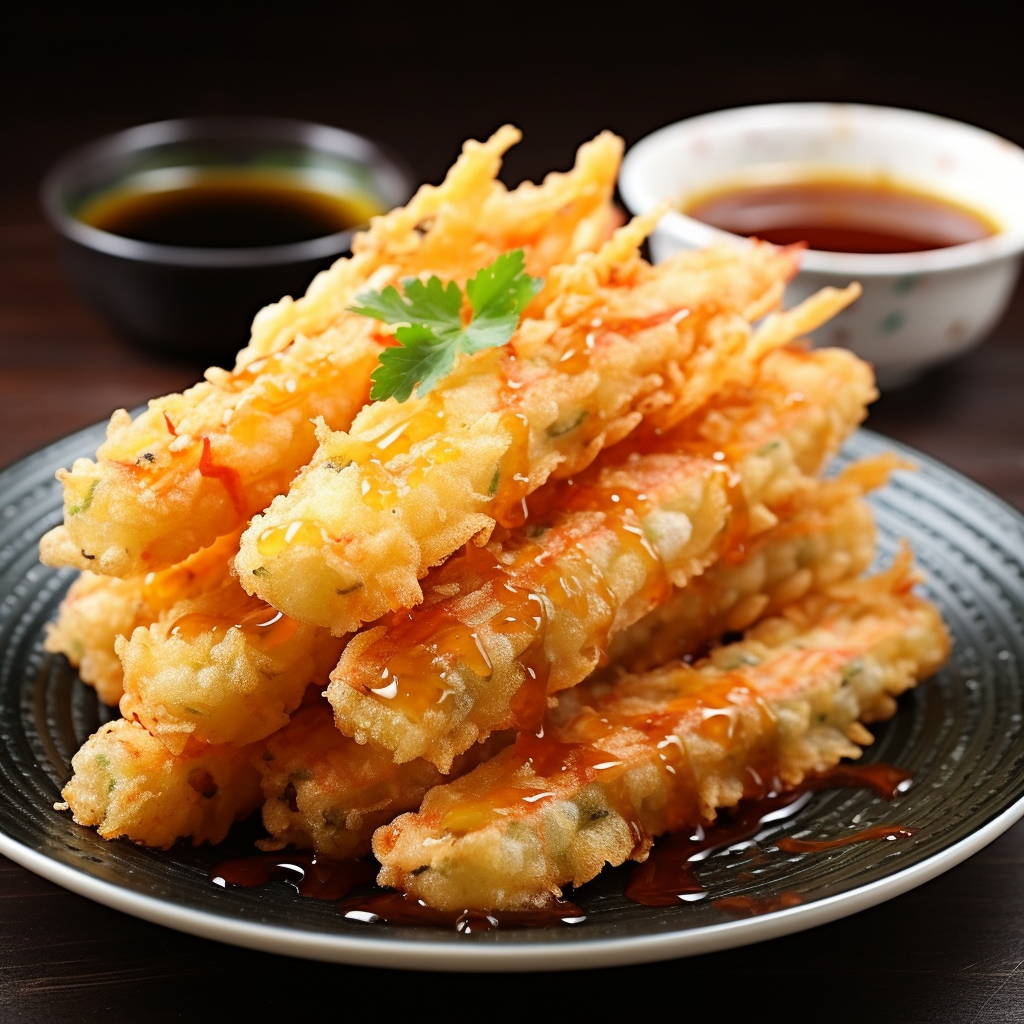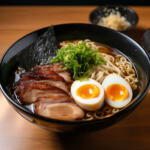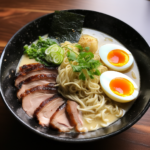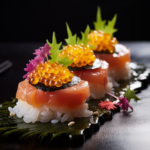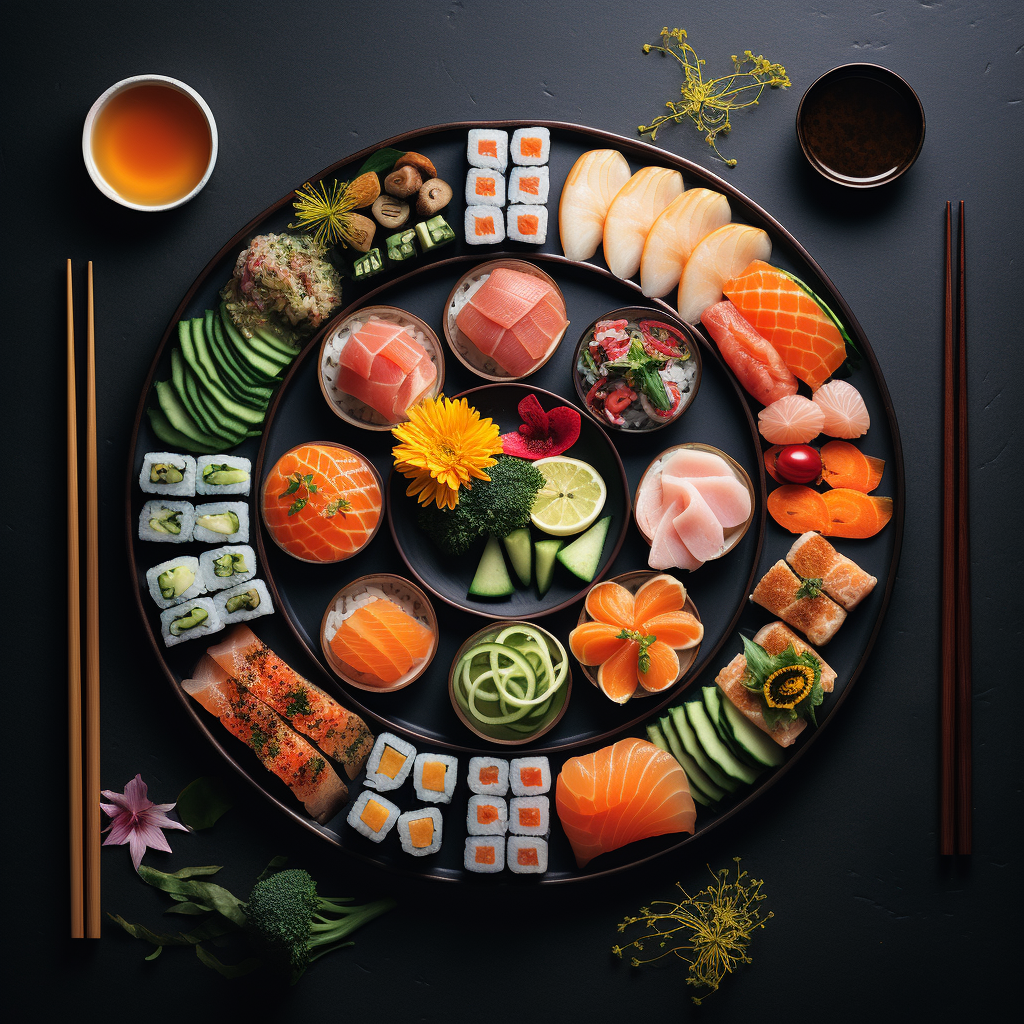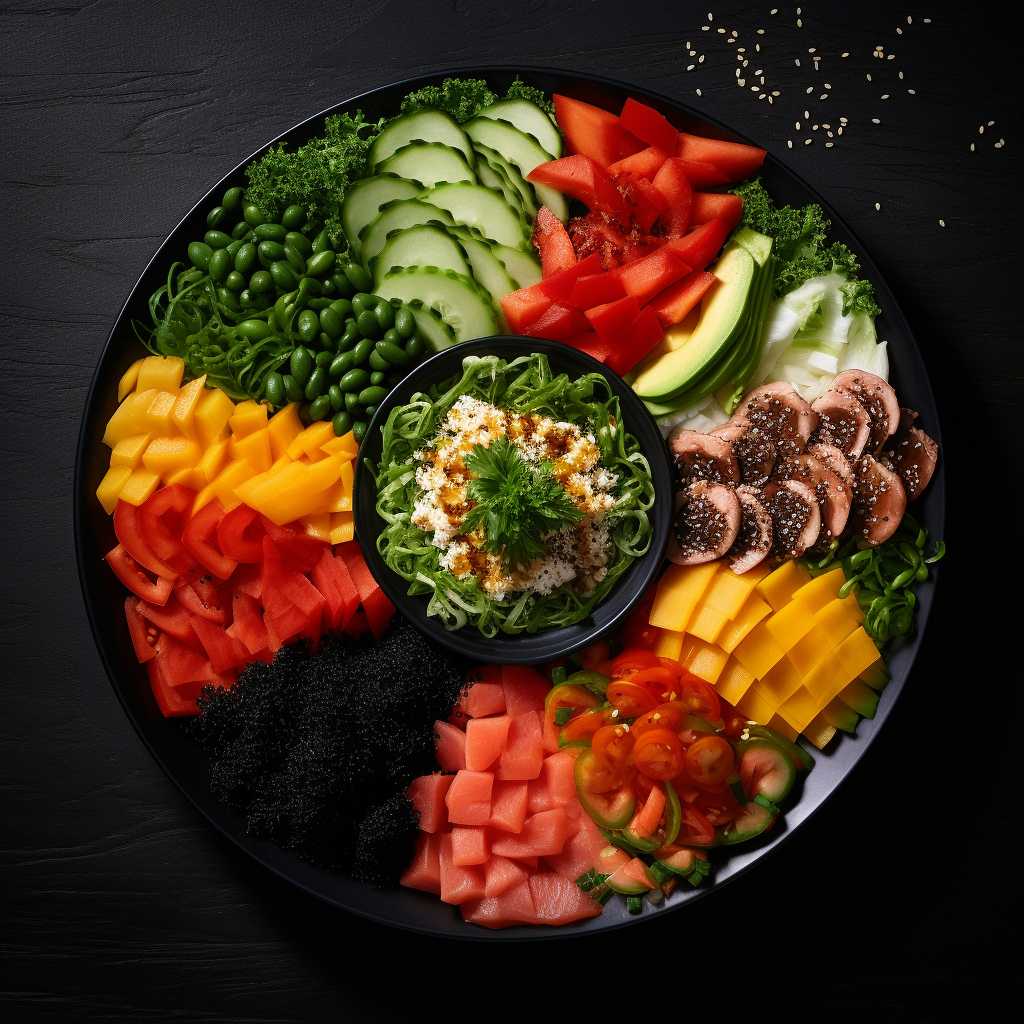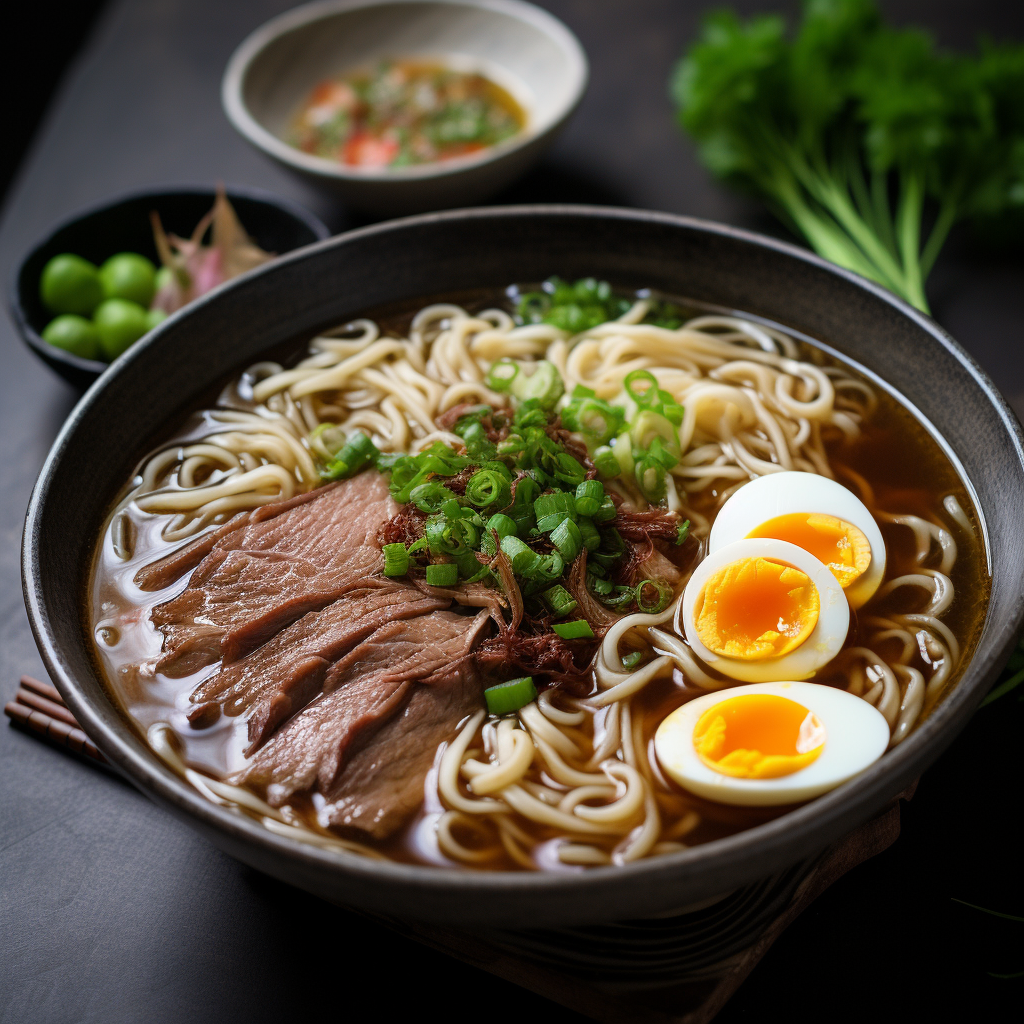A Glimpse into Tempura
Tempura, a classic Japanese dish known for its light, crispy texture and savory taste, has been an essential part of Japanese cuisine for centuries. Originally introduced by Portuguese traders in the sixteenth century, Tempura uniquely fuses European and Japanese culinary traditions.
Ingredients for authentic Tempura
- Medium-sized shrimps
- Eggplants and sweet peppers for the vegetable selection
- Flour for the batter, well-sifted
- Ice-cold Sparkling water
- Salt
- Vegetable oil (preferably Canola or Sunflower) for frying
Preparing and Frying Your Tempura
To begin with, make sure your ingredients are fresh. Freshness is the key to achieving the light, delicate flavor that tempura is famous for. Once you’ve prepared your ingredients…
- Use cold ingredients: Tempura batter should be made with cold water and ice to keep it chilled. This helps to create a light and crispy batter. Additionally, make sure your seafood or vegetables are dry and chilled before dipping in the batter.
- Use the right oil: Tempura should be fried in a neutral oil, such as vegetable or canola oil. The oil should be heated to around 350-375 degrees Fahrenheit. If the oil is too hot, the tempura will burn quickly, while if it is too cool, it will become soggy.
- Mix the batter gently: When making the tempura batter, be careful not to overmix it. Overmixing can lead to a dense and heavy batter. Instead, mix the batter just enough to incorporate the ingredients, leaving some lumps.
- Coat lightly: When coating your seafood or vegetables in the batter, be sure to shake off any excess batter. This will help prevent the tempura from becoming too thick and heavy.
- Fry in small batches: To prevent the oil temperature from dropping, fry your tempura in small batches. This will also help you ensure that each piece is cooked evenly.
- Drain excess oil: Once your tempura is cooked, remove it from the oil with a slotted spoon and place it on a paper towel-lined plate to drain excess oil.
- Serve immediately: Tempura is best enjoyed hot and crispy, so be sure to serve it immediately after frying. If you need to keep it warm, place it on a wire rack in a low-temperature oven to prevent it from becoming soggy.
The Perfect Tempura Serving
- Serve immediately: Tempura is best served hot and crispy, so be sure to serve it immediately after frying. If you need to keep it warm, place it on a rack in a low-temperature oven to prevent it from becoming soggy.
- Provide dipping sauces: Tempura is traditionally served with a dipping sauce made from soy sauce, mirin, and dashi. You can also offer other sauces such as ponzu or spicy mayo for variety.
- Garnish with lemon wedges: Lemon wedges are a common garnish for tempura, as the acidity of the lemon complements the fried flavor of the dish.
- Offer a variety of items: Tempura can be made with a variety of seafood and vegetables, so consider offering a selection of items such as shrimp, fish, sweet potato, and bell peppers.
- Use the right tools: Serve tempura with chopsticks or forks to make it easy for guests to pick up and eat. Provide small dishes or bowls for the dipping sauce.
- Enjoy in moderation: Tempura is a delicious treat, but it is high in calories and fat. Encourage your guests to enjoy it in moderation and balance it with other healthier options.
Conclusion
Once you’ve mastered the art of this delicious and aesthetic delicacy, you’ll surely be craving for more. Happy cooking!
Feel inclined to comment? Share your personal Tempura stories below. Don’t forget to subscribe to our newsletter for more delicious recipes and tips.

